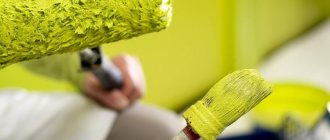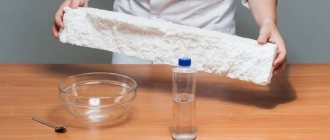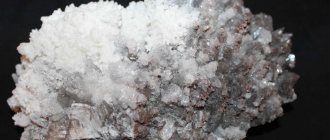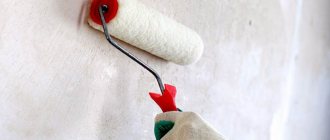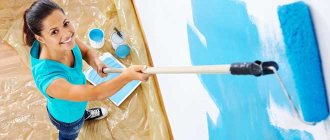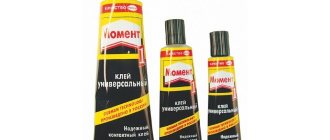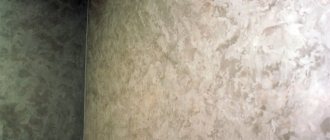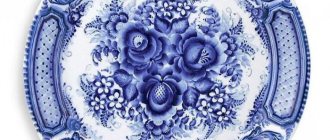Composition and overview of material characteristics
The name of silver is based not on the noble metal of the same name, but on its shades. The coating gets a similar color due to aluminum powder filler. It may be grinded differently, but this fact does not affect the final result regarding quality. However, for painting high-temperature objects, a composition with PAP-1 is recommended, and in other cases, powder of a finer fraction is used.
Technical characteristics are determined by what silver is diluted for painting metal or other surfaces. The method of applying paint also depends on this. This can be a sprayed aerosol composition or a liquid substance for distribution over the surface using a roller with a brush.
So, the dependence of the properties on what silverfish is bred with is as follows.
Bitumen resin affects the heat resistance of the material (limits of +400 and +600 degrees Celsius are acceptable). As a rule, the filler is selected from the PAP-1 category. Similar compositions are also used for anti-corrosion protection of metal structures and hydraulic structures, since the resin can withstand direct contact with water for a long time.
Drying oil increases adhesive properties with a wooden base. PAP-2 class powder is used to make paint.
Drying oil for mixing silver paint Source obuv.expert
Alkyd varnish expands the scope of application regarding interior and exterior work. It is also possible to paint plastic and mineral surfaces: concrete, brick, stone, ceramics. It is possible to use a pre-tinted composition, which will expand the palette of prepared paint.
Universal type tinting paste Source www.novoselie.market
As a result of factory or self-dilution of silver powder and a synthetic solvent, a paint with the following characteristics is obtained:
- elastic and self-flowing, which virtually eliminates the appearance of streaks;
- thixotropic, therefore fills small pores and minor defects with differences;
- moisture resistant and can serve as a water barrier for up to 5 years;
- inert to biological life, does not contribute to the formation of lesions;
- reflective, which is important in hot weather, as it does not retain heat and does not transmit ultraviolet radiation;
- anti-corrosion is valued when working with metals and reinforced concrete;
- heat-resistant, which is important for processing chimneys, batteries and hot water pipes, parts of automatic equipment;
- quick-drying;
- non-toxic.
Painted heating radiators Source dombolgariya.ru
The finished substance has all the qualities characteristic of aluminum and solvent. This also applies to disadvantages. These include a relatively short service life (about 3 years in water, up to 7 years outdoors, and 8-10 years at home), odor, and the need to use white spirit, 646 or P-4. Such compositions may cause an allergic reaction.
The base is subject to mandatory preparation. The presence of dust leads to the formation of lumps. If you have previously painted with alkyd or oil enamel, bubbles and smudges will appear. The galvanized film is destroyed by contact with aluminum. The situation can only be corrected by removing the old coating and treating the surface with primer (2 layers).
Rules for breeding silverfish
Few people understand the essence of the chemical processes that occur when diluting silver powder. Therefore, they can make various mistakes that can cause damage to the paint. When working with the composition, you should be guided by the following rules:
- Like dissolves into like. You can only use solvents that are already present in the paint so that there are no problems with its use. That is, the composition on drying oil must be diluted with a similar drying oil, and the material on varnish is mixed only with varnish.
- You should not take a thinner with more powerful properties. At first glance, the finished mixture will look good, but problems may arise during use, for example, the layer will turn out uneven.
- Before diluting paint or choosing a solvent, you need to know what surfaces it will be used for painting and under what conditions it will be used. It is important how the painting will be carried out and what tools are chosen for the work.
Finished products
Manufacturers offer a choice of 2 options for finished silver paint. The classic version is intended for painting cold and warm surfaces made of metal, wood and minerals (concrete, stone, brick and ceramics). The heat-resistant material is suitable for working with structures that are operated at temperatures up to +400 degrees Celsius.
Ready-to-use heat-resistant paint Source gidpokraske.ru
These can be heating communications and devices, stone units, parts and mechanisms that are subject to heating.
Benefits of paint and its storage
If diluted, ready-to-use silverfish is kept in a hermetically sealed container, its shelf life is six months. The material has been popular among users for quite a long period of time. The main advantages of cooked silverfish are as follows:
- Paint is an excellent protective layer for the surface to which it is applied;
- Serves as a reliable coating for a fairly long period of time;
- Lays down in a dense layer on the materials to be painted;
- Reliably protects metal from corrosion;
- The material is non-toxic;
- By trying different dilution proportions, you can get the desired shade.
The industry producing paints and varnishes produces silver powder with the addition of special impurities that make silver powder non-flammable. Silver painting gives the product a silvery tint. In addition, this paint is heat-resistant and has a long service life.
On video: how to dilute silver.
Making your own paint
Before diluting silver powder, you need to take precautions and prepare materials. So, you will need gloves to protect your hands, goggles for your eyes, and a respirator for your respiratory tract. It will be impossible to clean containers for paint, so it is better to choose an airtight container for household needs.
Regarding materials you will also need:
- solvent for cleaning tools and adjusting paint consistency;
- thinner (drying oil or varnish);
- aluminum powder (bronze can also be used);
- mixing brush with synthetic bristles;
- protection for the workplace (newspaper, film).
Kit for self-mixing silver paint Source ad-cd.net
See also: Catalog of companies that specialize in paints and varnishes
The sequence of actions in the paint mixing process is as follows:
- Metal powder is poured.
- Pour varnish or drying oil in small portions so that the mass is homogeneous. If necessary, solvent is added last.
- Kneading occurs at each stage for 15-20 minutes.
The proportions of how to dilute silver are determined by the object being painted. Manufacturers, along with other additives, usually stick to 10-20% aluminum relative to the total weight. For home preparation, if these are cold structures, then 1 part of the filler and 3 units of liquid are enough. For a spray gun, a similar mixture is additionally diluted with a solvent in a ratio of 1 to 1. For radiators, fireplaces, and chimneys, the recipe looks different. To 2 parts of powder add 5 parts of heat-resistant varnish. Other paintwork materials are not allowed. If desired, pigment can be added in dry or liquid form.
Preparing silver for painting metal surfaces
For those who do not know how to prepare silver-based paint, it should be noted that there is nothing complicated about it. To properly dilute silverware, it is necessary to comply with the established proportions. Those who don’t know how to do this correctly can find step-by-step instructions on the Internet. To paint metal surfaces, it is necessary to thoroughly clean them and remove roughness.
The painting process must be done quickly, since silver dries literally before our eyes.
It is advisable to prevent paint from getting on other surfaces, since it will be quite difficult to remove. Coloring can be done in different ways. Metal surfaces must be treated with a solvent to remove rust and scale. When preparing for painting, you need to take into account the fact that silver is not compatible with oil or alkyd paints. Therefore, the surface to be painted must be cleaned of them. As a result, the metal object is covered with a reliable layer that protects it from environmental influences. In addition, it simply casts silver, giving the product an original appearance.
The popularity of this paint in painting metal products is explained by the fact that silver has properties that are not found in other paints and varnishes. Diluted with various solvents, this paint ensures the resistance of metal products to corrosion. Therefore, it is widely used in painting the underwater parts of floating craft. The long service life of painted metal is also a strong argument in favor of using silver.
How you want the repairs made, sometimes expensive, to remain in their original untouched form for as long as possible. But unfortunately, it doesn't work that way, at least with most things. But there is an exception - silver paint, known for its resistance to environmental influences. Read about the reasons for its popularity, scope of application, composition, as well as how to prepare it at home and how to use it in this article.
What is silverware made of?
This paint did not get its euphonious name from the presence of silver in its composition, because it is made from the finest metal dust, consisting of ground aluminum and aluminum waste. In other words, undiluted silver is aluminum powder, and it is this metal that gives the paint a unique steely tint.
To prepare silver powder, two types of dust are used - PAP-1 and PAP-2. The latter has larger particles, but this does not affect the quality of the paint. Aluminum dust is mixed with a liquid - drying oil or varnish - and the metal paint is ready.
Both regular and heat-resistant mixtures can be prepared from aluminum powder. To do this, you need to select the right liquid for diluting the paint.
Of course, you can buy ready-made silver coins in the store - after all, the choice is quite large. But in order not to fall into the trap of economical manufacturers who add additional components to the paint, prepare the paint yourself. Here you need to remember that the prepared silver solution is stored for no more than six months.
Why is silverfish so popular?
For all the time that people have learned to prepare this paint and varnish product, only its advantages have been discovered.
Here are some of them:
- silver becomes a “second skin” for the surface being painted, repeating its texture. The paint is applied in a thin, even layer;
- This paint is very durable, does not peel off, does not fall off. But there is also a disadvantage to this - a silver-coated item is very difficult to remove paint from.
- long service life: the manufacturer of the paint components guarantees 7 years in air, operation in water - 3 years. Practice shows that these periods are still short for silverfish;
- breadth of use: silver can be used to cover almost any surface - from wood to metal and concrete;
- reliability: the paint is absolutely not afraid of rust;
- heat resistance: the material is resistant to high temperatures;
- convenience and safety of use: the ready-made solution applied to the surface dries quickly, the paint is non-toxic;
- finished painted surfaces with a wonderful silver tint are distinguished by originality and attracting the attention of others. You can change the intensity and color of metallic paint using different shades.
With all the variety of advantages, this paint has its disadvantages:
- the dry mixture is explosive. Therefore, it is imperative to store the powder in a tightly sealed container in a dry, dark place, out of reach of children, fire and away from electrical appliances. It is not recommended to keep foods and items that easily absorb odor in the same place as the powder. It is for the purpose of safe use that manufacturers offer both ready-made silver paint and powder with the addition of special impurities to avoid ignition.
- silver is not applied to surfaces coated with oil or alkyd paints, nitro enamel and NBC paint. When it comes into contact with them, the silverfish does not fit well, bubbles, or even comes off completely.
- Do not under any circumstances use silver to coat galvanized products - aluminum, as a more active metal, will “rust” and the zinc coating will be destroyed. If you decide to paint galvanized steel, cover it with several layers of primer.
- do not fall for advertising about choosing an acrylic composition of serebryanka: of course, it dries many times faster than a mixture on drying oil, but even after painting, traces of rust appear, which negates all the benefits of serebryanka.
Where is silver used?
As already noted, the paint showed its excellent qualities everywhere: both in industrial production and in everyday life.
It is used for painting:
- various parts in production shops;
- both entire radiator systems in factories and central heating batteries in apartments and houses;
- elements of systems in boiler rooms when it is necessary to protect them from overheating;
- parts on the vessel, floating docks, various port structures;
- all kinds of pipes with a wide range of uses;
- bridges;
- various sculptures, monuments, memorials, souvenirs, stoves, fireplaces, etc.
How to cook silverfish at home
Preparation
To make paint, you need to prepare rubber gloves, a roller, a brush or a paint remote control and a container that you don’t mind ruining, because the silverfish will cling tightly to it. Attention: you need to protect your skin from contact with the powder; If this does occur, immediately wash the surface of the skin with warm water and soap. Also prepare turpentine or paint thinner such as white spirit.
To breed ordinary silverfish, it is enough to prepare varnish or drying oil. To prepare heat-resistant paint, which will be used to cover parts of boiler rooms and fireplaces, and which must withstand temperatures of 350 degrees Celsius, a heat-resistant varnish is required.
Preparing the paint
To answer the question of how to dilute silver with drying oil, the proportions, namely, to get a simple, non-heat-resistant paint, the components are taken in a ratio of 1 to 3 or 1 to 4 (one part of aluminum powder, 3 or 4 parts of varnish or drying oil). If the mixture is thick, it can be diluted with white spirit, solvent or turpentine.
The amount of solvent depends on the method of application: if you plan to paint the surface with a paint brush, you can not use solvents, or add very little. If a paint remote control is used in the work, then the solvent is taken in a ratio of 1 to 1 to the powder.
Which solvent should you choose? Chlovinyl (XB) is considered the most suitable. Mix in a ratio of 1 to 9-10.
Now let’s talk about how to dilute silver powder if you need to prepare a heat-resistant product. We take aluminum dust (it doesn’t matter whether it’s brand PAP-1 or PAP-2), a heat-resistant solvent in a ratio of 2 to 5.
That is, dissolve two parts of powder in 5 parts of solvent. If we describe the process in more detail, we pour the powder into a container, and then continuously and frequently stirring the mixture, pour in the varnish. To avoid lumps, we recommend using a construction mixer. If it is absent, you need to stir the silver for at least a quarter of an hour. If the solution is thick enough, dilute it with toluene.
It should be noted here that heat-resistant paint components have an unbearable odor, so for safety reasons, carry out work in well-ventilated areas.
Serebryanka - application technique
The surface must be prepared for painting: thoroughly cleaned of dust, dirt, old paint, lime, chalk, rust, and scale. If it is almost impossible to remove paint from a surface, it is primed. The use of a primer in other cases is optional. Wooden products are carefully sanded before painting.
The paint must be applied in two, or better yet, three layers. This way the surface will have a neat, finished look. Moreover, the surface properties (heat resistance, corrosion resistance, etc.) also depend on the quality of painting.
You need to work with a brush quickly, clearly and deftly, without being distracted by external stimuli. After all, if you hesitate a little, the paint will begin to dry right on the brush while you work.
How to clean things from silver contaminants
If it so happens that when working with silver paint, a few drops were accidentally dropped, which became noticeable only when they were completely dry, then to remove them, use the same solvent that was used to dilute the paint.
In the case of using purchased ready-made silver, when it is not known what components were added to it, we recommend using fairly common “folk” means for removing paint.
- just drop vegetable oil on the stain, wait 10 minutes, and then vigorously wipe the area with a clean, dry cloth;
- To remove fresh silver stains, use nail polish without acetone. Also drop a drop on the stain, and after a few minutes, when the paint has dissolved, rinse it off with plenty of water.
And in conclusion, be careful and patient when handling the components, as well as the silverware itself, follow safety rules, and you will achieve the desired result.
Video: WHAT AND HOW TO BREED SEREBRYANKA
Application area
The scope of application extends to the private and industrial sectors. These can be hydraulic structures, swimming pools, reservoirs and technical equipment with individual parts. Silver is relevant in shipbuilding, automotive production, and public utilities. Architects paint sculptures and monuments, artisans decorate crafts and souvenirs, and ordinary people decorate fences and heating radiators.
Sculpture covered with silver Source p2.piqsels.com
Release forms
There are two main types of silver: heat-resistant (heat-resistant) and classic. The properties of the suspension depend on the type of varnish used in the manufacture of the paint and varnish material.
Heat resistant
In the manufacture of heat-resistant silver, aluminum powder PAP-1 and heat-resistant varnish (bitumen BT-577 or BT-5100) are used. Recommended proportion: 1 or 2 parts powder and 5 parts resin. The suspension is used for painting metal objects and objects that heat up during use. The coating can withstand temperatures up to 405 degrees Celsius. It is used for painting boiler house units, radiators, batteries.
Classical
When making a classic suspension, non-thermal varnish (acrylic, alkyd) or synthetic drying oil is used. Proportions: 1 part PAP-2 powder and 3 or 4 parts resin or drying oil.
This suspension is used to paint wooden, ceramic, metal, plastic, and plastered surfaces.
Types of varnishes used to make the suspension and type of surface to be painted:
- bituminous - for objects located in the open air or in water (metal, concrete, stone);
- acrylic - for wood, plastic, ceramics;
- organosilicon - for cables, wires, electrical appliances;
- alkyd - for metal fences, walls, ceramics;
- on synthetic drying oil - for wooden products and plastic.
See also
Top 4 varieties of quick-drying, odorless floor paints and how to choose
Advantages and disadvantages
In addition to technical characteristics, the demand is explained by low cost, availability in any locality, ease of installation and use. A thin-layer, reliable film follows any architectural shape, fills small pores and defects in the base (chips, scratches). Due to high adhesion to almost all materials, with rare exceptions, there is no peeling or flaking. The aesthetic side is also noted, especially in the interior. Silver color is an element of many style solutions.
Among the disadvantages, in addition to fragility, it is worth noting the explosiveness of the diluent and the excellent conductivity of aluminum. Based on this, materials should be stored away from fire, electricity and children. The container must be airtight and tightly closed.
Containers for storing paint Source avatars.mds.yandex.net
How to wash silver
Washing this paint and varnish composition is a rather complex and time-consuming process, especially if it is impossible to use a solvent. However, if the solvent with which the material was diluted is still at hand, then its use is the most rational and effective way of laundering.
Experts also recommend using sunflower oil, which must be applied to the stain, then, after waiting a few minutes, wipe it off with a rag.
Another equally effective method is nail polish remover.
As you have seen, if for some reason your choice fell on this particular dye, no special conditions or knowledge are required for its use, it is enough to understand what the composition is in front of you and follow the general recommendations of the manufacturer.
Application technology
The preparatory stage involves working with the foundation. Foci of biological damage are cleaned and treated with protective antiseptic agents. Rust, old coating and dirt are removed. Additionally, the surface must be polished with abrasive materials to level and roughen the base. Next, shavings, dust, debris are swept away and 2 layers of soil are applied. The product is selected in accordance with the composition of the object, its porosity and temperature.
Spray painting Source 3dtoday.ru
Serebryanka, regardless of the house or street, dries within a short period of time. Therefore, paint must also be applied quickly. To control the durability of the coating, it is recommended to apply the solution in 2-3 layers.
Types and composition of silverfish
In fact, the paint got its name not because of the presence of silver particles, but because of the corresponding color. Serebryanka is a fine aluminum powder of a light gray steel shade. This powder product is used for diluting and painting various surfaces. Thus, the paint base is obtained from aluminum waste by crushing. There are no other components in the silver itself.
There are two types of silverfish - PAP1, PAP2. Difference in particle size, material dilution proportions. The first option is made from larger particles, the second - from the smallest. Both production methods comply with GOST 5631-79. Also, recently a ready-made thick material has appeared in stores - PD silver paste. It costs more, but it is much more convenient to use for painting surfaces - you just need to dilute it. There is already diluted paint BT-177 on sale, it is completely ready for application.
Traditional methods of removing paint
Until the paint has dried, it is enough to use a rag soaked in solvent. The product must comply with the recommendations for the varnish or drying oil used. From metal surfaces, hard plastic and glass, the hardened mass can be carefully scraped off with a blade.
If the coloring was done with factory-made silver, then folk methods will help. The most affordable remedy is vegetable oil. Cover the dirty area with it for 10-15 minutes. Then the stain is wiped with a dry, rough cloth. The process is repeated if necessary. Another option involves applying nail polish remover (only without acetone in the composition) for 5-7 minutes. The softened film should simply be washed off with water.
Nail polish remover without acetone Source www.fdvor.ru
Silver paint in powder - how to dilute it
Silver is obtained from finely ground aluminum; either PAP-1 or PAP-2 powder is used for production. The second type is smaller in size, but visually it is difficult to notice; it is applied more evenly. Both types meet the requirements of GOST. How to dilute silver, there are two options: drying oil or varnish.
It is possible to prepare both a heat-resistant mixture and a regular one. The properties of the solution depend on the choice of the component used to dilute the silver. In general, there are ready-made compositions for painting surfaces on sale, but it is preferable to mix the powder with varnish or drying oil yourself to be sure that no other elements were added to the solution in order to save money and sell the product at a higher price.
The properties of the solution depend on the choice of the component used to dilute the silver.
Silver itself has a number of positive qualities that distinguish it from other painting materials:
- Covers the product with an even layer;
- High resistance to high temperatures and mechanical stress;
- Fast drying time;
- Long shelf life of the powder;
- Used in a large number of areas;
- Non-toxic;
- Attractive appearance, it is easy to apply evenly, and the coating is perfectly smooth without defects.
However, it also has a number of negative qualities:
- Dry silver is explosive;
- It cannot be applied to alkyd oil surfaces; upon contact with them, it begins to bubble and lies unsightly;
- Not suitable for galvanized substrates; together they are susceptible to corrosion.
It is easy to apply evenly, and the coating is perfectly smooth without defects.
This coloring agent is used in various fields. It can be used to cover wood, concrete, and various metal structures (radiators, mechanical parts, disks, pipes, bridges, etc. are painted with it).
The paint is especially popular in the field of painting parts, including those used on ships. This is due to its excellent qualities, which are not found in other paints and varnishes. It perfectly protects the metal from negative atmospheric influences, as well as from corrosion, and it has a fairly long service life (for products located outdoors for 7 years or more, for parts of watercraft for 3 years or more). And of course, its pleasant color and smooth coating make the products aesthetically attractive.
The paint is especially popular in the field of painting parts.
Features of breeding silverfish with your own hands
Before diluting the silver, you need to prepare the necessary tools and protect your hands from getting the coloring composition on them. Rubber gloves are suitable for this. If paint does get on your skin, you should immediately wash it with soapy water. When working, wear a respirator to protect the body from harmful volatile components.
You will also need a roller, brush or spray gun, that is, the tool that will be used to apply paint to the surface. Note! The proportion of powder dilution depends on the choice of tool. For application with a roller and brush, add a solvent in a mixture to solvent ratio of 1:0.5; for a spray gun, the appropriate proportion is 1:1.
A vessel is prepared in which the components will be mixed, taking into account that after silverware the vessel cannot be washed. In addition, you should have turpentine or another type of solvent on hand, white-spirit or solvent will do.
When working, wear a respirator to protect the body from harmful volatile components.
Ordinary silver is obtained by mixing it with standard drying oil or varnish. If it is necessary to obtain a heat-resistant effect, in which the paint can withstand temperatures up to 350 degrees, heat-resistant varnish is purchased.
It is necessary to protect nearby surfaces from paint getting on them; they are covered with paper or newspaper. If drops of coloring agent get on them, they can be washed off with improvised means. To do this, you will need sunflower oil, apply it to the stain and leave it for 10 minutes, and then scrub it vigorously with a rag, or you can use nail polish remover without acetone (acetone can damage the surface, so it is better to use a product without it). Nail polish remover works better on stains that have recently formed.
There are a number of useful tips to help with this process:
- Work with synthetic drying oil should be carried out outdoors, or good ventilation should be provided indoors;
- If you use only silver powder and varnish/drying oil for preparation, the solution will be too thick; to obtain a convenient solution for application, add any type of solvent, solvent, or turpentine;
- It is necessary to mix until a completely homogeneous mass is obtained, without any lumps, the approximate time of manual stirring is 15 minutes, it is better to use a mixer.
It is necessary to mix until a completely homogeneous mass is obtained.
Briefly about the main thing
Silver paint for metal, wood and mineral substrates can be ready-made or made with your own hands without special skills.
Depending on the diluent, the material is used for painting hot and cold objects. It is also possible to cover structures submerged in water.
The presence of aluminum in the composition provides reliable protection of the metal from rust.
The service life of a thin-layer coating is 5-10 years.
As a solvent, products are selected that are suitable for the selected varnish or drying oil. This can be white spirit, R-4, 646, solvent, turpentine.
To remove silver paint, you can use solvent, sunflower oil or nail polish remover without acetone. It is enough to soak the liquid on the paint and wipe it with a dry, rough cloth.
Ratings 0
Brief description of the material
Silver paint for metal is necessary for painting the material with a silver tint. The substance does not contain this metal. This universal paint and varnish product is able to create a smooth surface and also protect it from the negative effects of the environment. The composition can withstand high temperatures and can also be used not only outside, but also inside. To carry out coloring, the master will need to dilute the dry powder.
Composition and overview of material characteristics
The composition of the coloring agent for metal contains aluminum in different grinds, hence the specific color for the metal composition.
Aluminum powder is often used to paint high-temperature objects. The manufacturer also adds fine aluminum to the metal paint; visual differences are almost impossible to find. In addition, such products contain varnish.
Serebryanka has a rich silver color that can improve the external characteristics of a metal product. The composition lies on the surface in a dense, even layer and thus hides all its defects. You can dilute dry paint at home. The result may be either a heat-resistant or a regular mixture. To simplify the task, you can buy ready-made material.
Why is silverfish so popular?
People have been using this paint for decades. This composition is characterized by a lot of positive characteristics, which is why it is currently in demand among consumers. In industry and the national economy, silver is popular due to its affordable cost, reliability and ease of use.
Application of silverfish
In everyday life, the powdery composition is used for decorative purposes. It is used for painting house fences and interior items. Paint is even used when finishing swimming pools.
Before diluting silverware, the master should find out where it can be used. This point directly affects the method of diluting the powdered substance.
The composition is often used to finish the following items:
- parts in production;
- radiators;
- components from tanks, boilers;
- elements of ship vessels;
- port structures;
- pipeline.
This aluminum-based coloring composition is considered the best for finishing surfaces that suffer from the negative effects of external factors. The characteristic composition of the product allows it to prevent the harmful effects of sunlight and precipitation.
Advantages and disadvantages
Advantageous characteristics of silverfish:
- Convenient to use. The applied layer of paint makes the surface smooth and neat, without streaks.
- Durable. Despite the small thickness of the paint layer, it adheres firmly to the metal and does not peel off.
- Universal in use. Often the composition is used for painting metal, but due to the presence of aluminum in it, painting wood and stone is possible.
- Environmentally safe. There are no toxic ingredients in silver powder.
- It looks aesthetically attractive.
- Durable. According to consumer reviews, after painting the surface does not require updating for 6 years. As for its use inside a building, the coating can last up to 15 years.
- Heat resistant.
The material has few negative properties.
However, it can be noted that the universal composition of the coloring substance is characterized by an explosion hazard and the inability to be applied to a surface that has been treated with an oil, alkyd composition or nitro-enamel.
Types of odorless paints
Painting various objects in a residential area is complicated by an unpleasant odor and the release of toxic substances from the paint base. New technologies have made it possible to cope with this problem. Currently, there are a variety of quick-drying paints that are odorless and contain a small amount of harmful impurities. There are different types of paint and varnish products based on their composition:
- acrylic;
- latex;
- oil;
- water-dispersed.
Alkyd paints have a slight odor, but contain a harmful organic solvent, which makes them unsuitable for home interior decoration. All coloring compositions have their advantages and disadvantages and are intended for strictly defined surfaces.
Acrylic based
Acrylates are widely used among materials for interior decoration. Their moisture resistance makes them one of the best odorless wood paints. The quick-drying composition is suitable for finishing concrete, wooden floors and windows. Acrylic compounds are also used for artistic decoration of surfaces. Their advantages include the following:
- non-toxic, odorless composition;
- no harm to health;
- combustion resistance;
- versatility of use;
- ease of application (brush or textured roller);
- high adhesive properties;
- large palette of colors;
- various textures;
- crack-resistant coating;
- short drying time;
- uniform distribution over the application area;
- protection against rapid wear;
- low susceptibility to solar radiation, humidity, temperature changes.
Acrylic paint mixtures have a fairly high price, which can be attributed to their disadvantages. This disadvantage is compensated by outstanding performance characteristics.
Standard white acrylic paint. To obtain the desired tone, the appropriate color is added to the composition, the mixing proportions are indicated by the manufacturer. Some stores may offer computer color matching. Thus, you can get the desired color without independently searching among the products presented.
Acrylic-based paints and varnishes may contain antiseptic additives that protect the painted surface from mold and mildew. This option is necessary for wood coverings used in rooms with high humidity. The substances in the composition can also protect the surface from contamination and water penetration, so that cleaning can be done less frequently.
Enamel with latex added
There are no harmful substances among the components of latex paint, it is non-toxic and odorless. The composition is suitable for different surfaces:
- bricks;
- plasters;
- various types of ceilings;
- wallpapered walls.
Enamel with latex is resistant to wear, has good strength, and is not subject to swelling and drying out. This option is great for baths and kitchens due to its moisture resistance. Primary hardening of the paint occurs 20-30 minutes after application. It will take one hour to dry completely.
Oil-based paints and varnishes
Oil paints are made by mixing drying oil with pigmenting substances. Such compositions can be diluted with drying oil to achieve a more liquid consistency. Odorless oil paints for metal are especially popular; there are also varieties for concrete, wood and plaster.
Oil-based paints and varnishes can be colorless or colored and are used for finishing facades and interior work. They can be used to apply patterns, inscriptions or drawings. The affordable price makes this type popular among buyers. The only drawback is the long drying time.
Water-dispersed compositions
Water-based paints are the safest. They come in a standard white color and are used to paint floors and walls in children's rooms, schools and hospitals. Paintwork products dry quickly and look good on the surface, and are also not susceptible to moisture.
You can give water-dispersion paint a different color using tints. It is not harmful to the skin and is easily washed off with water without any solvents. This paint cannot be used to paint heating systems, metal and wood products.
Secrets of applying silver paint
There is nothing complicated about applying silver. In order to begin this process, you must first thoroughly clean the working surface from the previous layer of paint, metal, lime, etc. The metal surface should be cleaned of rust and scale. If you can’t remove layers of old paint, the surface can be primed.
If you are going to coat wooden materials with silver, you should first sand them thoroughly. For painting, you can use any tools that are more convenient for you to work with - a sprayer, a brush, a roller. Silver should be applied to the surface in two, or better yet, three layers. When choosing a brush as a tool for painting, you should remember that you need to be very dexterous and nimble, because if you hesitate even a little, the paint may have time to dry. As a result, everything will be painted unevenly.
How to use heat-resistant silver paint on metal, painting features
As noted above, heat-resistant silver is made on the basis of heat-resistant varnish, for example BT-577 or its acrylic or other analogues. Before starting work, it is necessary to carry out certain preparatory work.
Heat-resistant silver is made on the basis of heat-resistant varnish.Preparation and breeding
If we are talking about using ready-made paint, then you only need to prepare the surface. That is, remove old coating, dust, debris and other foreign objects that interfere with work from the surface.
If we are talking about applying paint to wooden parts, then it must be carefully sanded and dust removed from it after finishing the work.
Immediately before painting, the surface must be degreased. For this operation, it is permissible to use white spirit, solvents, and degreasers based on complex alcohols. Paint can only be applied after the surface is prepared.
Immediately before painting, the surface must be degreased.
If you don’t have ready-made paint, you can make it yourself. To prepare the finished paint, you will need to prepare dry silver powder (powder) and silver varnish. All this can be bought at a construction supply store. Domestic enterprises produce two types of powder PAP-1 and PAP-2, the first powder contains larger grains, the second smaller ones. But for the preparation of paint, this does not matter. The only difference is that after drying the surfaces will be slightly different.
Since the task is to prepare heat-resistant paint, then to dilute the powder it is necessary to use a special heat-resistant varnish, for example, BT-577 or its analogues.
The cooking process is as follows:
- Pour the required amount of powder into a dry, clean container.
- Carefully pour the varnish into the powder. As the varnish is added, the paint begins to stir. Construction workers use a mixer for this; at home, a stick is quite suitable, but you have to stir for about 15-20 minutes.
- The ratio of powder to varnish is 2/5.
- Mixing should result in a uniform mixture.
- If the mixture turns out to be thick enough, it can be diluted by gradually adding white spirit.
To dilute the powder, you need to use a special heat-resistant varnish.
Safety precautions require special attention. During work, you must use personal protective equipment. In particular, the eyes must be protected. Rubber or latex gloves are required to protect your hands.
During work, you must use personal protective equipment.
Principles of application to metal surfaces
There is nothing particularly difficult about painting with silver. From above it was said that the paint should be applied to a clean surface. Paint can be applied in different ways. And manually, and with a roller, and a brush, and using a spray gun. When choosing a tool, you must take into account the fact that silver dries quickly enough and a little confusion can lead to the appearance of unevenness.
If during the work a drop of paint falls in the wrong place, it can be removed using the solvent used to create the paint. You can also use “folk” methods. For example, drop a few drops of sunflower oil into the area where the paint gets in and then wipe with a dry cloth. In addition, you can use nail polish that does not contain acetone on the stain.
When painting, it is advisable to keep in mind that the paint consumption rate is 140-170 grams per square meter. m. This figure will also be required when making calculations for procurement. The paint is applied in one layer and only after it has completely dried, if necessary, a second one can be applied.
Serebryanka dries quickly enough and a little confusion can lead to unevenness.
In fact, silver is a universal paint used to protect metal and wood parts. If you follow the technological conditions for preparing and applying the coating, you can be sure that it will reliably protect metal from rust and wood from biological damage.
